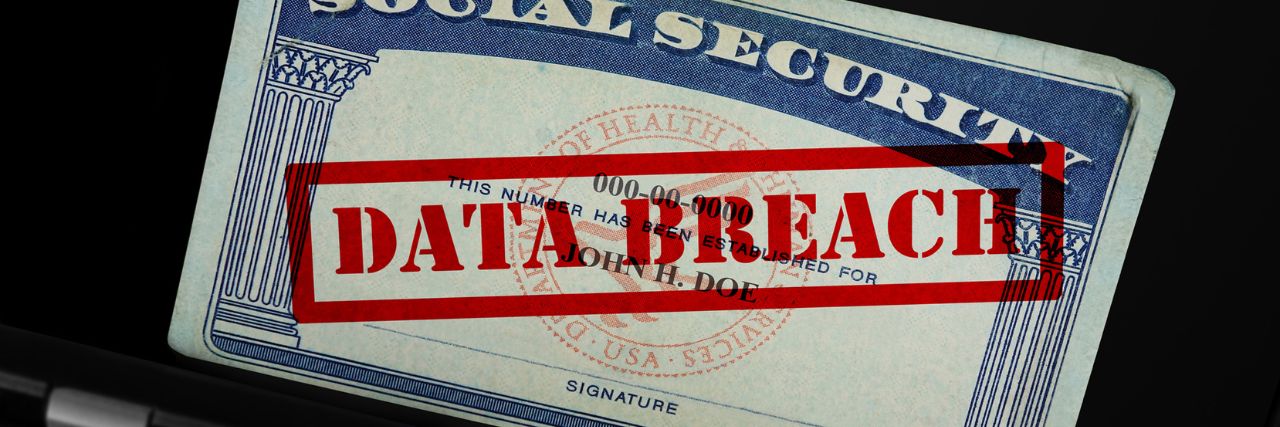5 Early Warning Signs of a Data Breach
January 10th, 2024 | 4 min. read

Are you worried a data breach can bring your business down – temporarily or permanently? Is your data hosted online, and you’re afraid of hackers getting into it?
These are all reasonable concerns - the consequences of a data breach can be severe, ranging from downtime to reputational damage to complete financial loss.
As a company determined to help businesses avoid the consequences of data breaches, we want to help you prevent that from happening in the first place.
Intelligent Technical Solutions (ITS) invited Sean Harris, our Senior VP for Cybersecurity, to weigh in on the early warning signs that your business data might have been breached – or is in the process of becoming breached. Harris has over 20 years of experience in IT compliance and security operations for various clients and sectors.
By the end of this article, you’ll be aware of what to look out for – and be better prepared to protect your business interests.
1. Unusual network and user activity
 Any usual activity is one of the first indicators of a potential data breach. “Something - really anything - out of the ordinary can be an early sign,” Harris said.
Any usual activity is one of the first indicators of a potential data breach. “Something - really anything - out of the ordinary can be an early sign,” Harris said.
Sometimes, these take the form of overwhelming users accessing your site or a sudden lack of emails. Multiple password prompts are also unusual, and massive spam deliveries should be monitored.
Cybercriminals often target off-peak times to avoid detection, and 24/7 proactive monitoring can significantly reduce the time it takes to identify and mitigate a potential threat.
Keep an eye on your network logs and invest in intrusion detection systems to quickly identify and respond to abnormal behavior.
2. Unauthorized access
According to the 2023 Verizon data breach report, 23% of breaches started due to compromised credentials, and thus, keeping a close watch on user accounts and access logs is a critical part of data protection.
If you notice unfamiliar user accounts or unauthorized access attempts, it could be a sign of a breach.
Regularly audit user permissions and ensure employees have the minimum access required to perform their tasks. Implementing multi-factor authentication (MFA) is another effective way to add an extra layer of security to your systems, making it harder for unauthorized individuals to gain access.
3. Unexplained data modification
Changes to critical data or inexplicably missing files can also be an early red flag.
“We had a client submit a ticket and say, ‘I can’t open this file.’” Harris recounts, “So we reached out, and it turns out they had ransomware. We were able to restore and get a lot of stuff back up because they clearly communicated that data anomaly.”
Related: Absolute Cybersecurity? Why a 100% No-Breach Guarantee is Impossible
Employees often unwittingly let hackers into company databases, so you should regularly audit and monitor your databases. Implementing data loss prevention (DLP) tools can help you track and control the flow of sensitive data within your organization, minimizing the risk of unauthorized modifications.
4. Increased phishing attempts
Phishing remains one of the most common methods cybercriminals use to access sensitive information. It is also the second costliest initial attack vector, costing businesses an average of $4.65 million in data breaches.
“I’ve seen things where the client got breached through email,” Harris shared. “But it wasn’t the amount of permission or power the bad actor wanted; it was the information in that mailbox.”
The hacker then proceeded to spearfish other employees using the hacked information.
All of a sudden, they’re getting targeted spam emails.
You’ll have to rely on your team’s knowledge of the latest phishing techniques more than you think. As a business owner, encourage a culture of skepticism regarding unexpected emails or messages. Regarding financial requests, triple-check with the person before proceeding with the transaction.
You should also regularly conduct phishing awareness training and simulate phishing attacks to assess your employees’ ability to recognize and report phishing attempts promptly.
VIDEO: What is Security Awareness Training
5. Performance issues
A sudden decline in system performance can be indicative of a data breach. Cyberattacks, such as distributed denial of service (DDoS) attacks, can significantly impact your network’s speed and reliability. If you notice unexplained slowdowns, it’s essential to investigate the root cause promptly.
“Some of them are going to steal the computing power for crypto mining,” Harris said, “but there’s a hilarious story about that.”
Then, he told a story that sounded – frankly – made up. A wind turbine company calmly approached a security provider, claiming their IT environment was compromised - and they could tell because their machines started fixing themselves. IT performance was – suddenly – better.
Was it their IT guy doing it? No. Were there ransomware demands? No. Was any data lost yet? No.
The machines were just magically getting patched; the wind turbine company, to the provider’s horror, was ready to let the hackers sit in their system and fix their issues.
“It turns out that the bad actors patched their machines and took better care of them to keep anyone else from coming in,” Harris laughed. The security company convinced the wind turbine executives to kick the hackers out... eventually.
But you likely won’t be as lucky as that company – unless you can also detect hackers early.
Make sure to invest in a multi-layered zero-trust cybersecurity infrastructure, including firewalls and DDoS protection tools, so you can mitigate the impact of such attacks and maintain optimal system performance.
Related: What We Can Learn from Data Breaches at these San Francisco Hospitals
Ready to Check Your Company’s Cybersecurity Posture?

Proactive prevention is the key to safeguarding your business data and maintaining the trust of your clients and stakeholders. By staying vigilant, implementing zero-trust cybersecurity measures, and keeping your employees trained, you can reduce the risk of falling victim to cyber threats.
But is your data safe right now?
We want to give you the confidence to answer that question with a resounding “yes.” As a cybersecurity services provider with a mission to make the digital world a safer place, we have a FREE Cybersecurity Assessment you can take for your peace of mind.
We also have the following resources to help you with your cybersecurity journey:
Kharmela Mindanao is a senior content writer for Intelligent Technical Solutions. She’s called Ella by her friends and likes yoga, literature, and mountain climbing. Her favorite book is Anxious People by Fredrik Backman. She creates art and poetry and is on a quest to find the best cheesecake.
Topics:
